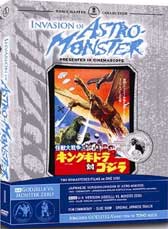 INVASION
OF THE ASTRO-MONSTER (MONSTER ZERO) (1965)
INVASION
OF THE ASTRO-MONSTER (MONSTER ZERO) (1965)Directed by Ishiro Honda
Classic Media
 INVASION
OF THE ASTRO-MONSTER (MONSTER ZERO) (1965)
INVASION
OF THE ASTRO-MONSTER (MONSTER ZERO) (1965)By 1965, Japanese monster films had made millions of dollars (not to mention millions of fans) throughout the world. In particular, the United States was a lucrative market with the so-called “monster-boom” of the 1960s with Aurora plastic monster model kits and a plethora of TV shows (THE MUNSTERS, THE ADDAMS FAMILY, etc.) and movies featuring monsters of all kinds. Sensing this trend, the executives at Toho Company Ltd. began importing recognizable American names to actually appear in their films. Prior to Nick Adams’ appearance in 1965’s FRANKENSTEIN CONQUERS THE WORLD, the usual practice was for American distributors to buy Japanese monster films and film extra scenes in Hollywood with American actors and release the spliced films in the United States. FRANKENSTEIN CONQUERS THE WORLD was the first “official” Japanese/American co-production between Henry G. Saperstein’s UPA Productions and Toho Company Ltd. It was also the first of three films Mr. Adams made for Toho. The second was MONSTER ZERO, a sequel to GHIDORAH, THE THREE HEADED MONSTER (1964) and the third was a 1966 spy thriller, THE KILLING BOTTLE which has still never been released in the United States. As part of their Godzilla DVD series, Classic Media has released both the Japanese and American versions of this cult favorite, MONSTER ZERO (aka INVASION OF THE ASTRO-MONSTER).
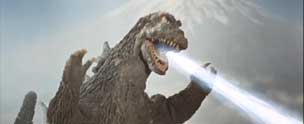
Astronaut Glenn (Nick Adams) and Astronaut Fuji (Akira Takarada) are on their way to a newly discovered planet (Planet X). It was recently located by Japanese scientists while examining strange radio waves behind Jupiter. After landing on the mysterious planet, the astronauts encounter a race of men living underground led by “The Controller” (Yoshio Tsuchiya). The leader explains that their planet is slowly being destroyed by King Ghidorah (christened “Monster Zero” by the X-ites) and asks if Earth would “loan” them Godzilla and Rodan to defeat him. As an extra incentive, the X-ites offer Earth a “wonder drug that can cure all diseases.” The astronauts bring this news back to Earth, but with all the endless debates between world governments, the X-ites take matters into their own hands and secretly land and take Godzilla and Rodan back to Planet X.
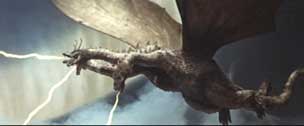 After
the first battle in which Godzilla and Rodan easily drive Ghidorah away, the
Earthlings soon learn of the wicked intentions of the X-ites. Their planet is
running out of water and they have concocted a plan to use Godzilla, Rodan and
Ghidorah to take over the earth. Once war between the planets is declared, the
story leads to the spectacular battle at the climax.
After
the first battle in which Godzilla and Rodan easily drive Ghidorah away, the
Earthlings soon learn of the wicked intentions of the X-ites. Their planet is
running out of water and they have concocted a plan to use Godzilla, Rodan and
Ghidorah to take over the earth. Once war between the planets is declared, the
story leads to the spectacular battle at the climax.
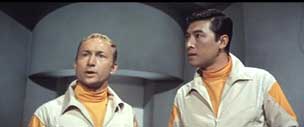
MONSTER ZERO represents the creative apex of the usual Toho team (Ishiro Honda, Eiji Tsuburaya, Tomoyuki Tanaka, Akira Ifukbie). After this film all four of them would work together only four more times (WAR OF THE GARGANTUAS, KING KONG ESCAPES, DESTROY ALL MONSTERS, LATITUDE ZERO). Godzilla’s next two films (GODZILLA VS. THE SEA MONSTER and SON OF GODZILLA) would be helmed by Jun Fukada with music by Masaru Sato and would be set entirely on tropical islands without the need for costly miniature cities to be demolished by the monsters, as the special effects budgets on both films were drastically reduced. As if seeing the writing on the wall, Mr. Tsuburaya’s special effects budget on MONSTER ZERO was lower than the previous films thus giving the film the dubious distinction of being the first Godzilla film to rely on stock footage from other entries. This is particularly apparent with the scenes featuring Rodan many of which were lifted from the 1956 film and converted to TohoScope 2.35:1 (the original RODAN was shot in 1.33). This trend would continue and really lower the quality of such later films as GODZILLA VS. GIGAN (1972) and 1973’s GODZILLA VS. MEGALON (in which nearly every scene of Megalon’s attack on Tokyo was cannibalized from GHIDORAH THE THREE HEADED MONSTER and MONSTER ZERO).
 The
cast of MONSTER ZERO is loaded with the usual Toho A-list talent. Akira Takarada
makes his third appearance in a Godzilla film and is his reliable self playing
the heroic Astronaut Fuji with confidence and aplomb. Jun Tazaki as Dr. Sakurai
in a role that fits his authoritative talents like a glove. Mr. Tazaki would
often play generals or scientists in many Toho films. His stand out performance
was as Captain Jinguchi in 1963’s ATRAGON. Akira Kubo plays against type
as the nerdy inventor, Kazuo Teri. Mr. Kubo would go on to appear in SON OF
GODZILLA, DESTROY ALL MONSTERS, and YOG: MONSTER FROM SPACE as well as a cameo
in 1995’s GAMERA: GUARDIAN OF THE UNIVERSE. Yoshio Tsuchiya excellently
plays another of his offbeat roles as “The Controller of Planet X.”
Mr. Tsuchiya first appeared as an alien in 1957’s THE MYSTERIANS and would
also memorably portray alien possessed earthlings in 1960’s BATTLE IN
OUTER SPACE and 1968’s DESTROY ALL MONSTERS. Of course, Kumi Mizuno as
Miss Namikawa (the alien with a heart of gold) manages to be beautiful, sinister
and sympathetic as she makes the ultimate sacrifice to save the human race.
The
cast of MONSTER ZERO is loaded with the usual Toho A-list talent. Akira Takarada
makes his third appearance in a Godzilla film and is his reliable self playing
the heroic Astronaut Fuji with confidence and aplomb. Jun Tazaki as Dr. Sakurai
in a role that fits his authoritative talents like a glove. Mr. Tazaki would
often play generals or scientists in many Toho films. His stand out performance
was as Captain Jinguchi in 1963’s ATRAGON. Akira Kubo plays against type
as the nerdy inventor, Kazuo Teri. Mr. Kubo would go on to appear in SON OF
GODZILLA, DESTROY ALL MONSTERS, and YOG: MONSTER FROM SPACE as well as a cameo
in 1995’s GAMERA: GUARDIAN OF THE UNIVERSE. Yoshio Tsuchiya excellently
plays another of his offbeat roles as “The Controller of Planet X.”
Mr. Tsuchiya first appeared as an alien in 1957’s THE MYSTERIANS and would
also memorably portray alien possessed earthlings in 1960’s BATTLE IN
OUTER SPACE and 1968’s DESTROY ALL MONSTERS. Of course, Kumi Mizuno as
Miss Namikawa (the alien with a heart of gold) manages to be beautiful, sinister
and sympathetic as she makes the ultimate sacrifice to save the human race.

However, the stand out performance in MONSTER ZERO goes to America’s own Academy Award nominated actor (1963’s TWILIGHT OF HONOR) Nick Adams as Astronaut Glenn. Having already worked with a majority of the cast and crew earlier the same year in FRANKENSTEIN CONQUERS THE WORLD, he seems very comfortable and delivers a solid performance. There have also been long standing rumors of an intense love affair between Mr. Adams and Miss Mizuno and their love scenes in MONSTER ZERO have a particular chemistry that would lend credibility to the stories of an off screen romance. All one has to do is compare Mr. Adams’ sincere performance to the sleepwalking-like performance of Russ Tamblyn in 1967’s WAR OF THE GARGANTUAS to appreciate how he took the part seriously even though at the time it was considered a huge come down from the Hollywood roles he once had. In fact, many kaiju fans today thoroughly enjoy Mr. Adams’ work in both his monster films and to this day, surviving cast and crew members (especially Yoshio Tsuchiya) still have fond memories of Nick Adams and speak highly of working with him nearly 40 years after his 1968 death from a drug overdose.
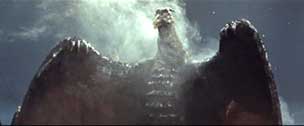 Classic
Media’s DVD is probably the best they have produced so far in this series.
The transfers on both the Japanese and American versions are excellent with
clear pictures and an excellent and vibrant color scheme. It seems that the
American version was taken from the original negative judging by how excellent
it looks. The American version also features a fine audio commentary by Japanese
film expert, Stuart Galbraith IV which is informative and entertaining, offering
lots of tidbits on the making of this film. The transfers for both versions
are in 2.35:1 anamorphic widescreen (although the title sequence on the American
version is in 1.85 and then converts to proper 2.35:1 once the action starts).
The removable subtitles are clear and easy to read and the 2.0 sound on both
versions is great. The other special features include an eight minute documentary
entitled “The Creator of Godzilla—Tomoyuki Tanaka” narrated
by Ed Godziszewski and edited by Bill Gudmundson, plus the Japanese trailer
and an image gallery.
Classic
Media’s DVD is probably the best they have produced so far in this series.
The transfers on both the Japanese and American versions are excellent with
clear pictures and an excellent and vibrant color scheme. It seems that the
American version was taken from the original negative judging by how excellent
it looks. The American version also features a fine audio commentary by Japanese
film expert, Stuart Galbraith IV which is informative and entertaining, offering
lots of tidbits on the making of this film. The transfers for both versions
are in 2.35:1 anamorphic widescreen (although the title sequence on the American
version is in 1.85 and then converts to proper 2.35:1 once the action starts).
The removable subtitles are clear and easy to read and the 2.0 sound on both
versions is great. The other special features include an eight minute documentary
entitled “The Creator of Godzilla—Tomoyuki Tanaka” narrated
by Ed Godziszewski and edited by Bill Gudmundson, plus the Japanese trailer
and an image gallery.
INVASION OF THE ASTRO MONSTER easily rates as the best work Classic Media has
done so far with the Godzilla series. However, judging from the beautiful quality
of the brief clip of the coming attraction for GODZILLA’S REVENGE, that
promises to be even better! (Joe
Cascio)